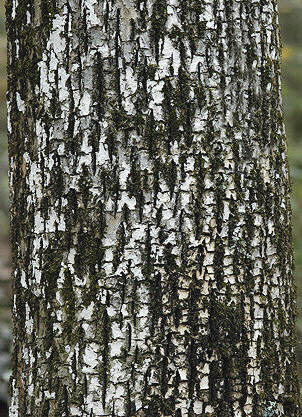| |
|
| |
 |
| |
White Ash Leaf |
Identification:
Each leaf is composed of 5-9 leaflets.
The leaves are pinnately
compound,
opposite and have a
total length between 8 and 12 inches. The leaves are paler
below and lightly hairy. The White Ash leaflets
are entire below the midpoint of the leaflet. Compare
the leaflet shape with that of the Shagbark Hickory. Note that
the White Ash leaflets are stalked, unlike the leaflets of the
Shagbark Hickory. The White
Ash leaves and branches are opposite, whereas the Shagbark Hickory
leaves and branches are alternate.
| |
|
 |
|
|
White Ash Bark |
The bark of the White Ash is
gray-brown, thick, and is deeply furrowed with a distinctive
diamond-shaped pattern of ridges. This is a good
identification characteristic in all seasons for this tree.
| |
|
| |
 |
| |
White Ash Female Flowers |
| |
|
| |
 |
| |
White Ash Male Flowers |
This species is dioecious ("two
houses") so that male and female flowers are bourn on separate trees.
The White Ash at Station 3 is female and you can spot the clusters
of female flowers in late March and early April. There are
several trees that bear male flowers on the right side of the trail
just before Station Three, where the
trail makes a sharp hairpin turn to the left. They appear at
the same time as the female flowers do at the Station tree.
These flowers can be pretty high in the tree so a pair of binoculars
can be beneficial for seeing the details.
Other Uses
and Lore: Although not as strong as hickory, the wood has
a good combination of strength and lightness. It is much used
for the "D" handles of shovels and spades, and is the wood of choice
for oars and baseball bats.
The Trail From
Station Two to Station Three
 |
| May Apple
Foliage |
From Station
Two, the trail continues a long descent down to the West Fork of the
Stones River. Before you leave the vicinity of Station Two,
you may want to look at some of the young ashes along the trail
Some of these, the ones that have 4-sided twigs (square in cross
section) are Blue Ashes. You will learn more about Blue Ashes
at Station Eight. Look for May Apples along the trail on
the way to Station Three. The station will be on the left side
of the trail.
|